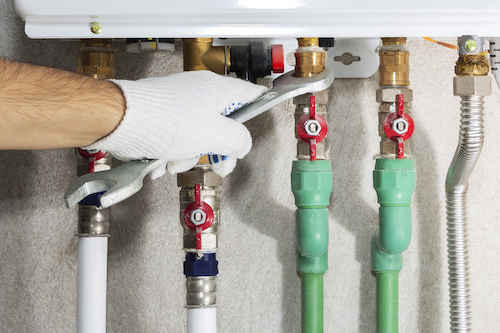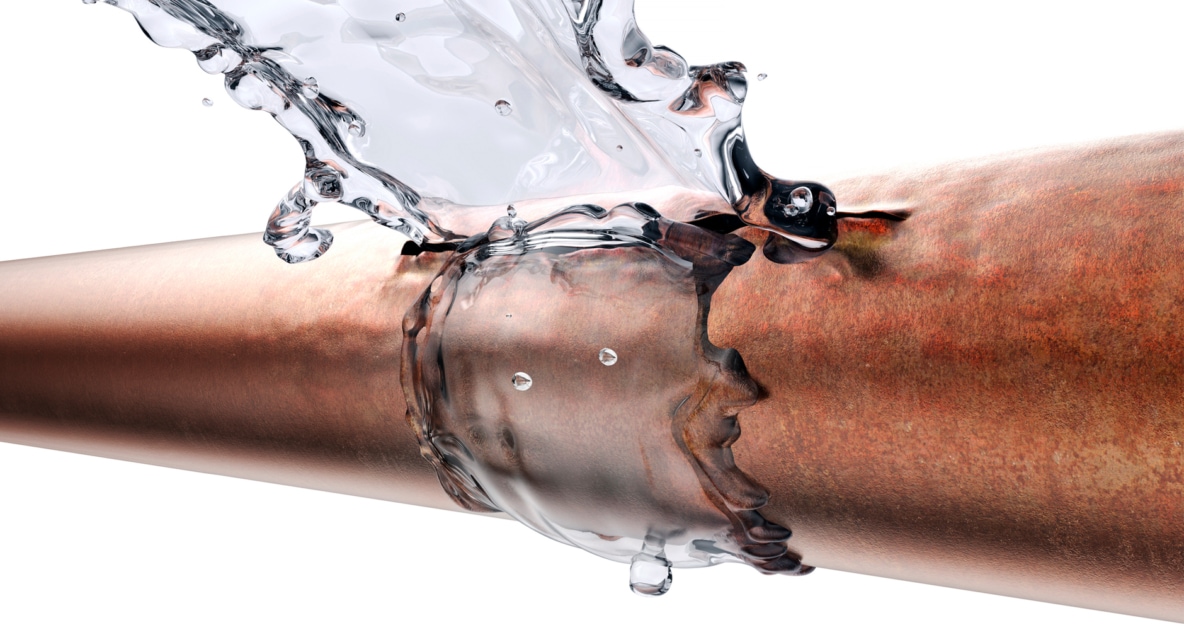Fixing Water Leaks - A Complete Manual to Restoration
Fixing Water Leaks - A Complete Manual to Restoration
Blog Article
We've encountered this article pertaining to Quick Tips To Help Deal With Water Damage listed below on the web and thought it made sense to write about it with you in this article.

What should you do if a water pipeline ruptureds in your house, producing a mini-waterfall as well as swamping a location of your home? The longer you wait, the much more serious the water damages in your property. For these reasons, you need to learn what to in situation of a burst water pipeline.
Shut Off the Main Waterline Valve
Look for the regional shut-off shutoff to turn-off water in one details location just. This will certainly reduce off the water in your whole home. Normally, the main valve is located outside the residence following to the water meter.
Call Water Damages Remediation Pros for Assistance
After closing the water source, call the pros for help. Due to the fact that they need to fix the pipelines as well as deal with the problems to your home, this is not something you can readily Do it yourself. Look for help from a respectable company supplying 24/7 emergency solutions. With their professional aid, you can alleviate worsening because water can permeate through your things causing warped baseboards, loosened floor tiles, or damage framework. Don't take this issue lightly and also seek occupation support for complete peace of mind.
Document the Damages For Insurance coverage
As you are waiting on the pros to show up, document the damages triggered by the wayward pipeline. Take photos and also video clips of every little thing. Do closeup shots of belongings. These things will certainly act as evidence for your house owner's insurance policy. Staying aggressive with this enables you to file a claim for protection, which will assist you and your family members come back on your feet.
Salvage Things That Can Be Conserved
Read the items and take out the most essential ones from the stack once you're done taking pictures. Dry them off as well as try to preserve as high as you can. Drag them far from dampness so they can start to dry out.
Begin the Drying Process
Fortunately, water from your waterlines are clean so you do not have to worry about drain water. The moving water might have disrupted the dust and also particles in your carpetings as well as floorboards. Be prepared with handwear covers as you utilize buckets to dump out the water.
Specialists are the only ones qualified to take care of the burs pipes and also succeeding damages. You will usually see red flags like bubbling paint, odd noises in the plumbing, mildewy smell, caving ceiling, peeling off wallpaper, or water stains.
What should you do if a water pipeline bursts in your residence, creating a mini-waterfall and also flooding a location of your residence? For these reasons, you require to learn what to in case of a ruptured water pipeline. After shutting the water source, call the pros for assistance. With their professional aid, you can minimize worsening since water can leak with your things resulting in deformed walls, loose floor tiles, or damages structure. Luckily, water from your waterlines are clean so you don't have to stress regarding sewer water.
How to Handle a Burst Pipe and Minimize Damage
Steps to Take Ahead of Time
If you own property in an area that experiences cold weather, you need to be aware of seasonal maintenance tasks that will help you protect your property as the weather changes each year. One of the most important steps is to winterize your pipes to ensure they won't freeze or burst when the temperature drops. This includes action items like insulating any exposed pipes, detaching garden hoses and covering outdoor faucets. If the weather gets cold enough, you may even consider leaving a faucet dripping or opening cabinet doors during the coldest parts of the day.
No matter how prepared you might be, accidents and emergencies still happen. You'd be wise to set up a savings account specifically for your property so you have a "rainy day" fund set aside for unexpected expenses. All homes regardless of age, location or condition will inevitably need some form of emergency repair.
Steps to Take for Frozen Pipes
A frozen pipe will not necessarily burst, so if you can catch a frozen pipe early on, you could save yourself a major headache. When your area experiences frigid temperatures, be sure to check your plumbing and keep an eye out for warning signs like faucets only releasing small amounts of water or toilets not refilling when flushed. If you do run into one of these issues, you're likely dealing with a frozen pipe.
If this happens, your first step should be to cut off the water supply to that section of the plumbing. Expanding and freezing water can quickly cause damage. Even if the water supply is shut off, you will likely still deal with some leaking from the water that defrosts after the pipe has thawed. Be prepared with a mop, bucket and/or towels to quickly soak up any excess water.
In order to thaw a frozen pipe, you can use a space heater, infrared or incandescent heat lamp, or even a hairdryer to warm up the frozen area. Heat tape is also an option and should be used according to manufacturer instructions. Do not use any sort of open flame to thaw frozen pipes, as it poses a major fire hazard and can damage your pipes further.
Steps to Take for a Burst Pipe
Water damage claims are the second most common insurance claim in the U.S. When you're dealing with a frozen pipe, the water continues to expand as it freezes, which creates pressure that can cause a pipe to burst. When this happens, the crack or leak in the pipe allows water flow from the pipe to enter your home where it shouldn't. If a pipe does burst, you need to act quickly to mitigate property damage and repair cost.
Your very first step should be to shut off your main water supply to minimize flooding typically the most expensive damage to address. Once you've shut off the water supply, make sure you identify the entire area that has been impacted by the leak. Remove as much water as possible as quickly as possible using a mop, sponges, towels or a shop vacuum or wet/dry vacuum. To prevent long-term damage due to moisture build-up, run a dehumidifier or fan in the affected area. Contact a licensed plumber to ensure the pipe is correctly repaired before running any water to that section of the home again. Burst pipes and the associated water damage are something you absolutely want to avoid as a property owner. If you've had to learn your lesson the hard way, don't let yourself get caught in a similar situation during the next spell of cold weather. The best way to deal with frozen or burst pipes is to prevent them in the first place proactive winter maintenance will save you time, money and a whole lot of stress.

I discovered that page on Do s And Don ts In Case Of Water Damage while doing research the internet. Please take a moment to distribute this blog entry if you appreciated it. Thank you for going through it.
Best in business. Report this page